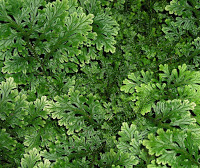|
medicinal plant : 5 posts by 4 authors. 4 images.
According to Hindu mythology, Sanjeevani is a miraculous herb possessing the power to cure practically any ailment! What’s most astounding in this regard is that this herb is believed to even possess the ability to revive the dead!
This herb is mentioned in the Ramayana when Ravana’s son Indrajit severely injures and nearly slaughters Lakshmana. To treat Lakshmana, Hanuman was summoned to fetch the Sanjeevani herb from mount Dunagiri located in the Himalayas. On reaching mount Sumeru, Hanuman, unable to recognize the herb, lifted the whole mountain, bringing it to the battle-field!
The popular word “Sanjeevani”, when translated, means “One that infuses life”. This in turn derives from the myriad medicinal properties of this plant; the Sanjeevani herb is thought to possess 101 types of medicinal powers! In India, traditionally, the dry Sanjeevani has been used to treat several human health ailments for centuries together!
The Sanjeevani plant is found in the Indian Western Ghats, especially Coorg. This plant grows in regions that receive plentiful supply of rainfall. Sanjeevani is extensively utilized by the tribals of Coorg called the Kurubas, who use it as medication for wounds and ulcers. They also drink this plant’s juice with milk and honey to stay healthy. Interestingly, this is also a special medicine in the tribal areas. Must be a Pteridophyte, Selaginella sp. Above one looks like Selaginella rupestris Well there’s a lot of confusion here! I must suggest with apologies that the writer refers to a paper of my own on Sanjeevani, where for the first time a botanist has been able to relate the range of a species to Valmiki’s Ramayana. After all, if sanjeevani grew in the western Ghats, why would Lord Hanuman have to travel three or four times as far up to Dronagiri in Pithoragarh, Uttarakhand, in the Himalaya to collect it? However there IS actually one species of Selaginella with even more impressive “coming back to life” ability than the often sold Selaginella bryopteris, and complying better with the large symbolic element in many traditional plants (e.g. in yarsagumpa). This is Selaginella pulvinata, which in India only grows around Dronagiri and up the valley from there in Pithoragarh. S. pulvinata has also been found independently in China to be a considerable medicinal plant, with among other uses, the ability to help assuage internal hemorrhage – as Laxmana was suffering from after being shot by the Ravana’s arrow.
Anyway, have a look at this paper about it:
Fraser-Jenkins, C.R. 2013. Sanjeevani cannot be Selaginella bryopteris, Indian Fern J. 29(1 & 2): 183-195. It is illustrated photographically.
Interestingly …, no less, who has led several fanciful wild-goose chases after sanjeevani in the west Indo-Himalaya, has apparently persuaded the Uttarakhand State Govt. to plan to spend many corot’s of rupees looking for sanjeevani – but I believe it is already now identified in a respectable Indian botanical journal and is right under their noses!
Concerning the input, the species illustrated is nothing to do with sanjeevani, and is not one of those species that exhibit a “coming back to life” after dessication phenomenon. The writer has failed to say where the plant was photographed (which State, at least, must be mentioned if one has any scientific care) and whether it is natural or cultivated. It has also been widely misidentified as Selaginella bryopteris is not at all like that, and S. pulvinata even less so!
It is not S. rupestris, which does not occur in India at all – I don’t where people read this kind of inaccurate generalised information from for making their wild guess! But they have evidently not seen any of the standard pteridological literature from Indian botanists, including the late Dr. Dixit’s book on Selaginella, based on Alston’s work.
It looks a little like S. subdiaphana, common in the west Indo-Himalaya, but may be too foliose for that – could even be S. monospora if in the N.C. Indo-Himalaya (Darjeeling, Sikkim). There are other similar species in South India. But unfortunately the photos are inadequate to identify Selaginella species. 1. The plants are sterile (or if not, no details of strobili can be seen), so we can’t see if they had dimorphic sporophylls or not. 2. The photos did not include any close-up of leaves on branches to study the diagnostic features. So I can’t really hazard a serious guess until we can see more.
But in any event, it is definitely not the species commonly held and sold to be sanjeevani, S. bryopteris.
Interesting subject though!
|
Disclaimer
1. For any mistake in identification or for becoming efloraofindia e-group member (for contributing towards building of efloraofindia or otherwise), pl. mail to indiantreepix@googlegroups.com or itpmods@googlegroups.com
2. For better viewing of species’ pages, colour scheme & formatting is being followed as: Description of the species, Details of other flora species on the same page, Uses/ harms, Distribution, Abundance/ Location/ Flowering time & date, Habit & habitat, Etymology & pronunciation, Other interesting information, stories etc., Others, Botanical names, Common names, Main point of discussion below, Discussion about Botanical names.
Navigation
- Award for eFloraofIndia
- Colour scheme & formatting
- Copyrights, Permissions, Citations
- eFloraofIndia appreciated
- Names of Plants in India site
- Flowersofindia site
- Posting Guidelines
- For members’ information
- Logo, Tagline, Acronym
- Volunteers required
- ‘Pitamah’ of eFloraofIndia
- ‘अजेय’ ‘Ajey’ of eFloraofIndia
- ‘Saarthi’ ‘सारथि’ of eFloraofIndia
- ‘Jewel’ of eFloraofIndia
- ‘Grassman’ of eFloraofIndia


